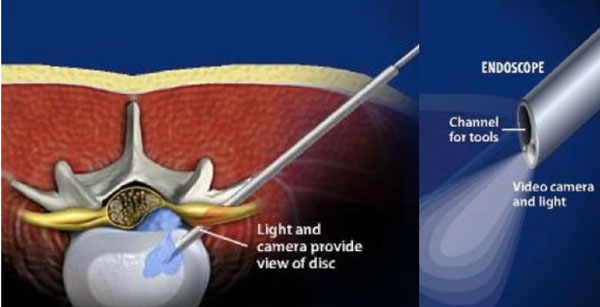- Home
- Transforaminal Endoscopic Spine Surgery old

- Home
- Transforami...
Transforaminal Endoscopic spine surgery is a minimally-invasive spine procedure used to treat back pain and sciatica caused by herniated disc and stenosis. Here the surgery is done through transforaminal approach via kambin's traingle between traversing and exiting nerve root.
An endoscope is a very thin fiber-optic video camera, which can be used to see internal portions of the body. Endoscopes used for spine surgery are typically the diameter of a standard pencil (5-8 mm). The endoscope is inserted into the body through a small “keyhole” incision, just large enough for the endoscope to fit through. Surgery is performed by passing instruments through the endoscope to remove disc material or bone spurs. The procedure is performed under Local/Epidural analgesia where the patient is awake, aware and moving his/her legs during the procedure.
Immediately 2-3 hrs after the procedure you are asked to take meals and walk around in the room. You are asked to stay for a night and discharged for home the next morning. For first 2 weeks you are allowed to walk inside/around home and after 2 weeks you are asked to visit doctor for follow up.
At 2 weeks your doctor may ask you to increasr walk, sit for work but avoid forward bending, floor sitting or heavy weight lifting.
At 6 weeks post surgery your doctor may ask you to increase exercise and resume work.
Sports or other exertional activities to be avoided for 3-6 months of surgery.

The benefits of endoscopic spine surgery as compared to traditional “open” surgery include:
- Small incisions and minimal scar tissue formation
- Less damage to surrounding muscle and soft tissues
- Decreased blood loss
- Decreased pain and reduced need for pain medication
- Quicker recovery and faster return to regular activities.
- Decreased risk of postoperative infection


